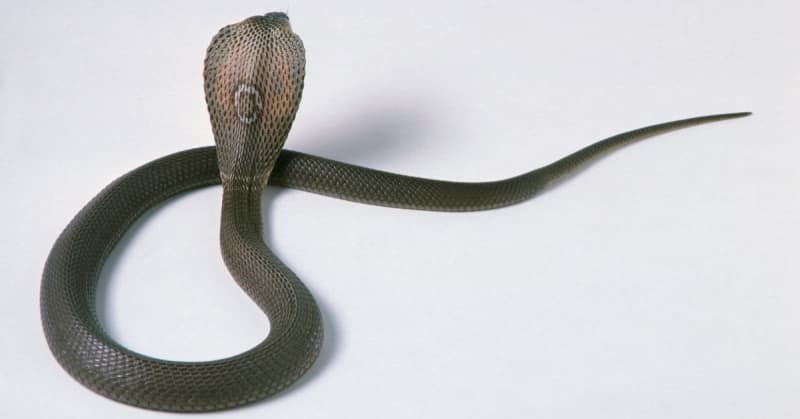
FIRST EFFECTIVE TREATMENT FOR AFRICAN SPITTING COBRA BITES IDENTIFIED IN NEW STUDY
For the first time, researchers have identified an effective treatment for African spitting cobra bites, which currently lead to severe injuries and disfigurements including limb loss and amputation.
Knewz.com has learned spitting cobra venom rapidly causes dermonecrosis, which destroys the skin, muscle and bone near the site of the snake bite. A bite from an African spitting cobra can lead to the loss of the whole limb or necessitate amputation in extreme cases.
There is currently no treatment for severe local envenoming from spitting cobras. Antivenoms only exist for other snake species, and are often ineffective at treating local envenoming because antivenom antibodies are too large to penetrate into the area around the bite site, according to scientists.
It is estimated that snake bites cause long-term detrimental effects in around 400,000 people around the world each year, with a significant portion of those in Africa being the result of spitting cobra bites.
Professor Nicholas Casewell and colleagues at the Liverpool School of Tropical Medicine in England, including Dr. Steven Hall who is ow at Lancaster University, found that using the repurposed small molecule drug varespladib prevents skin and muscle damage by blocking one of the two major toxins found in spitting cobra venom.
Varespladib was originally developed as an anti-inflammatory and investigated for use in a variety of inflammatory diseases and heart conditions, but since 2016 it has been primarily investigated as an inhibitor of toxins found in snake venoms.
“Our findings hold much promise to improve the treatment of tropical snakebite. Current treatments for spitting cobra bites are widely regarded as being ineffective, meaning that rates of disability and amputation have remained high across much of Africa. Our data shows that blocking just one of the main toxin families in spitting cobra venom will likely prevent the debilitating tissue damage seen in thousands of snakebite patients each year," Casewell said in a statement.
Casewell's team was led by Hall and PhD student Keirah Bartlett, and included researchers from Canada, Denmark, Costa Rica and the U.S. The analyzed spitting cobra venom and found that the toxins causing dermonecrosis are largely cytotoxic three-finger toxins (CTx), but that phospholipases A2 (PLA2) toxins "play a critical role."
Varespladib was already known to inhibit several forms of secretory PLA2.
Researchers found that injecting varespladib, even up to an hour after envenoming, reduced the extent of dermonecrosis and reduced venom-induced muscle toxicity.
“These findings are extremely promising, not only does this offer up a new mode of treatment where previously nothing effective existed, but because varespladib has already gone through testing in human clinical trials, including for snakebite, it could be available for use in real world patients very soon," said Bartlett, lead author of the study published in the Proceedings of the National Academy of Sciences.
“Snakebite is a devastating neglected tropical disease, with tissue destruction caused by necrotic snake venoms permanently injuring hundreds of thousands of victims every year. Our work shows that the repurposed drug, Varespladib, is incredibly effective at inhibiting such necrosis caused by African spitting cobras; an exciting finding as their venoms are particularly fast-acting and destructive," Hall said. "We hope this work helps pave the way to future snakebite therapies that can save the lives and limbs of victims worldwide.”
Now, researchers hope to find a viable treatment to block the CTx toxins, the other main component of the spitting cobra venom. Have treatments for both toxins could significantly reduce adverse outcomes and long-term morbidity caused by spitting cobra bites.
—TMX contributed to this report.
2024-05-08T13:18:32Z dg43tfdfdgfd